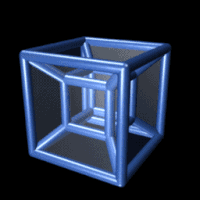Thanks Baker,
I wasn't really fishing for solutions - more like converting #2 into a real world 3d problem. For now I'm going to continue to attempt to solve this problem with just my brain (that's half the fun right?). However, if it gets to a point where my inability to solve the problem starts to slow the progress of project development - then I am definitely going to do what you suggested.
Something tells me that somewhere among all the links you posted here lies the solution to my puzzle - I may just need to be exceptionally creative in order to see it. Luckily, I believe that I am
Michael
I wasn't really fishing for solutions - more like converting #2 into a real world 3d problem. For now I'm going to continue to attempt to solve this problem with just my brain (that's half the fun right?). However, if it gets to a point where my inability to solve the problem starts to slow the progress of project development - then I am definitely going to do what you suggested.
Something tells me that somewhere among all the links you posted here lies the solution to my puzzle - I may just need to be exceptionally creative in order to see it. Luckily, I believe that I am
Michael






Comment